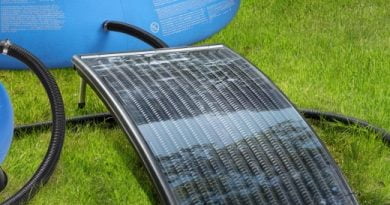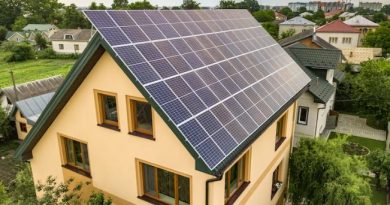How to Choose the Right Solar Panel System for Your Needs
How to Choose the Right Solar Panel System for Your Needs
Solar panel systems are a great way to generate clean, renewable, and affordable energy for your home or business. However, not all solar panel systems are created equal. There are many factors to consider when choosing the right solar panel system for your needs, such as:
- Your energy consumption and goals
- Your roof size and orientation
- Your budget and financing options
- Your local climate and incentives
- The type and quality of solar panels and equipment
In this blog, we will guide you through these factors and help you make an informed decision that suits your situation and preferences.
Your energy consumption and goals
The first step to choosing the right solar panel system for your needs is to determine how much energy you use and how much you want to save or generate from solar. This will help you decide the size and capacity of your solar panel system and the potential savings and payback period.
To calculate your energy consumption, you can look at your past electricity bills and determine how many kilowatt-hours (kWh) of electricity you use per month or year. You can also use online tools such as EnergySage Solar Calculator or Solar-Estimate Solar Calculator that can estimate your energy usage based on your location, home size, appliances, and lifestyle.
To calculate your energy goals, you must decide how much of your electricity bill you want to offset or eliminate with solar. For example, if you’re going to cover 100% of your electricity needs with solar, you will need a more extensive and expensive system than if you want to cover 50% or 25%. It would be best to consider how much excess electricity you want to produce and sell back to the grid or store in batteries for later use.
Your roof size and orientation
The next step to choosing the right solar panel system for your needs is to evaluate your roof size and orientation. This will affect the number, layout, and efficiency of your solar panels and the amount of sunlight they can capture.
To measure your roof size, you can use a tape or laser measure to determine the length and width of your roof. You can also use online tools such as Google Project Sunroof or SolarReviews Roof Calculator to estimate your roof size based on satellite imagery.
To measure your roof orientation, determine the direction your roof faces. The best exposure for solar panels is south-facing, as they can receive the most sunlight throughout the day. However, east-facing or west-facing roofs can also work well, especially with a good tilt angle. North-facing tops are not ideal for solar panels, as they receive the least sunlight.
Your budget and financing options
The third step to choosing the right solar panel system for your needs is determining your budget and financing options. This will affect the type and quality of solar panels and equipment you can afford and your system’s return on investment and payback period.
The average cost of a residential solar panel system in 2023 ranges between $18,000 and $20,000 before applying tax credits or other incentives that may be available where you live. This works out to between $2.75 and $3.35 per watt of solar installed, depending on your location and the brands of solar equipment used. Once you consider the federal solar tax credit, which is 26% in 2023, the overall cost drops to an average of between $12,600 and $14,000.
However, there are other ways to finance your solar panel system besides paying cash upfront. Some of the most common financing options are:
- Solar loans: Solar loans are loans from a bank, credit union, or solar company to pay for your solar panel system. Solar loans allow you to own your system and benefit from tax credits and incentives while spreading the cost over time. Solar loans typically have interest rates ranging from 3% to 8% and terms ranging from 5 to 20 years.
- Solar leases: Solar leases allow you to rent a solar panel system from a third-party company for a fixed monthly fee. Solar leases allow you to enjoy lower electricity bills without paying any upfront costs or maintenance fees while letting the company own the system and claim tax credits and incentives. Solar leases typically have terms ranging from 10 to 25 years and fees ranging from 10% to 30% less than your current electricity bill.
- Power purchase agreements (PPAs): PPAs allow you to buy the electricity generated by a solar panel system owned by a third-party company at a fixed rate per kWh. PPAs will enable you to save money on electricity without paying any upfront costs or maintenance fees while letting the company own the system and claim tax credits and incentives. PPAs typically have terms ranging from 10 to 25 years and rates ranging from 10% to 30% less than your current electricity rate.
Your local climate and incentives
The fourth step to choosing the right solar panel system for your needs is considering your local climate and incentives. This will affect the performance and output of your solar panels, as well as the cost and savings of your system.
Your local climate determines how much sunlight your solar panels can receive and convert into electricity. The more sunlight your area gets, the more energy your system can produce and the fewer panels you need to cover your needs. However, some solar panels can perform better than others in different weather conditions, such as high temperatures, humidity, or snow.
Your local incentives determine how much money you can save or earn from your solar panel system. Various types of incentives can reduce the upfront cost or increase the long-term value of your system, such as:
- Tax credits: Tax credits are reductions in your income tax liability based on a percentage of the cost of your solar panel system. The federal government offers a 26% tax credit for residential and commercial solar systems installed in 2023, which will drop to 22% in 2024 and expire in 2025. Some states and local governments also offer additional tax credits for solar systems.
- Rebates: Rebates are cash payments or discounts that you can receive from your state local government, utility company, or solar manufacturer based on the size or type of your solar panel system. Rebates can vary widely depending on your location and eligibility criteria.
- Net metering: Net metering is a policy that allows you to sell any excess electricity that your solar panel system produces back to the grid at the same rate that you pay for electricity. Net metering can lower your electricity bill or even earn you credits that you can use to offset future bills. However, not all states and utility companies offer net metering at favorable rates.
- Feed-in tariffs: These policies allow you to sell any excess electricity your solar panel system produces back to the grid at a fixed rate per kWh higher than the retail rate. Feed-in tariffs can generate income for you while encouraging renewable energy production. However, not many states and utility companies offer feed-in tariffs or offer them at attractive rates.
The type and quality of solar panels and equipment
The fifth and final step to choosing the right solar panel system for your needs is to select the type and quality of solar panels and equipment that match your preferences and requirements. This will affect your system’s efficiency, durability, aesthetics, and warranty.
Three main types of solar panels are available for residential use: monocrystalline, polycrystalline, and thin-film. Each type has its advantages and disadvantages, such as:
- Monocrystalline: Monocrystalline solar panels are made of single-crystal silicon cells with a uniform black color and a high efficiency of 15-22%. Monocrystalline solar panels are also durable, stable, and space-efficient. However, they are also more expensive, sensitive to shading, and prone to damage from high temperatures.
- Polycrystalline: Polycrystalline solar panels are made of multiple-crystal silicon cells with a blue or gray color and a lower efficiency of 15-17%. Polycrystalline solar panels are also cheaper, less sensitive to shading, and more tolerant to high temperatures. However, they are also less durable, stable, and space-efficient.
- Thin-film: Thin-film solar panels are made of thin layers of various materials such as amorphous silicon, cadmium telluride, or copper indium gallium selenide that have a dark or flexible appearance and a low efficiency of 10-13%. Thin-film solar panels are also lightweight, portable, adaptable, and resilient. However, they are also more expensive per watt, less durable, less stable, and less space-efficient.
In addition to solar panels, you also need to choose other components of your solar panel system, such as:
- Inverter: An inverter is a device that converts the direct current (DC) electricity produced by your solar panels into alternating current (AC) electricity that you can use in your home or business.
Freuently Asked Questions (FAQs)
1. What factors should I consider when choosing a solar panel system for my home?
- Consider factors such as your energy consumption, location, roof type, budget, and environmental goals.
2. What is the difference between monocrystalline and polycrystalline solar panels?
- Monocrystalline panels are more efficient and cost-effective for smaller spaces, while polycrystalline panels are less efficient but more affordable.
3. How do I determine the right solar panel system size for my home?
- Calculate your average daily energy consumption and consult with a solar professional to determine the appropriate system size.
4. Are there government incentives or rebates for installing solar panels?
- Many governments offer incentives, tax credits, and rebates to encourage solar panel installations, so check with your local authorities.
5. What is the importance of solar panel efficiency?
- Efficiency determines how effectively a panel converts sunlight into electricity. Higher efficiency panels can generate more power in limited space.
6. How does the orientation and tilt of my roof affect solar panel efficiency?
- The ideal orientation is south-facing, but panels can be installed on east or west-facing roofs. The tilt angle should match your latitude for optimal performance.
7. What is the lifespan of solar panels, and do they require maintenance?
- Solar panels typically last 25-30 years and require minimal maintenance, cleaning, and occasional inspections.
8. How can I evaluate the quality and reliability of solar panels and inverters?
- Research reputable brands, read reviews, and consider warranty terms when assessing the quality of solar components.
9. Can I install solar panels, or should I hire a professional?
- While DIY installation is possible, hiring a licensed professional for safety and compliance with local regulations is recommended.
10. What is the payback period for a solar panel system?
- The payback period varies depending on factors like system size, location, and energy prices but typically ranges from 5 to 10 years.
11. How can I finance my solar panel system?
- Options include cash purchases, solar loans, power purchase agreements (PPAs), and solar leases. Explore the best option for your financial situation.
12. Are there backup options for when solar panels don’t generate power, such as during nighttime or cloudy days?
- Backup options include battery storage systems or remaining connected to the grid, depending on your energy needs and goals.
13. How do I ensure my solar panel system meets local building codes and regulations?
- Work with a reputable solar installer who is knowledgeable about local regulations and permitting requirements.
14. Can I expand my solar panel system in the future if my energy needs change?
- Yes, many solar panel systems are expandable, allowing you to add more panels to meet increased energy demands.
15. What steps should I take to get started with a solar panel installation?




